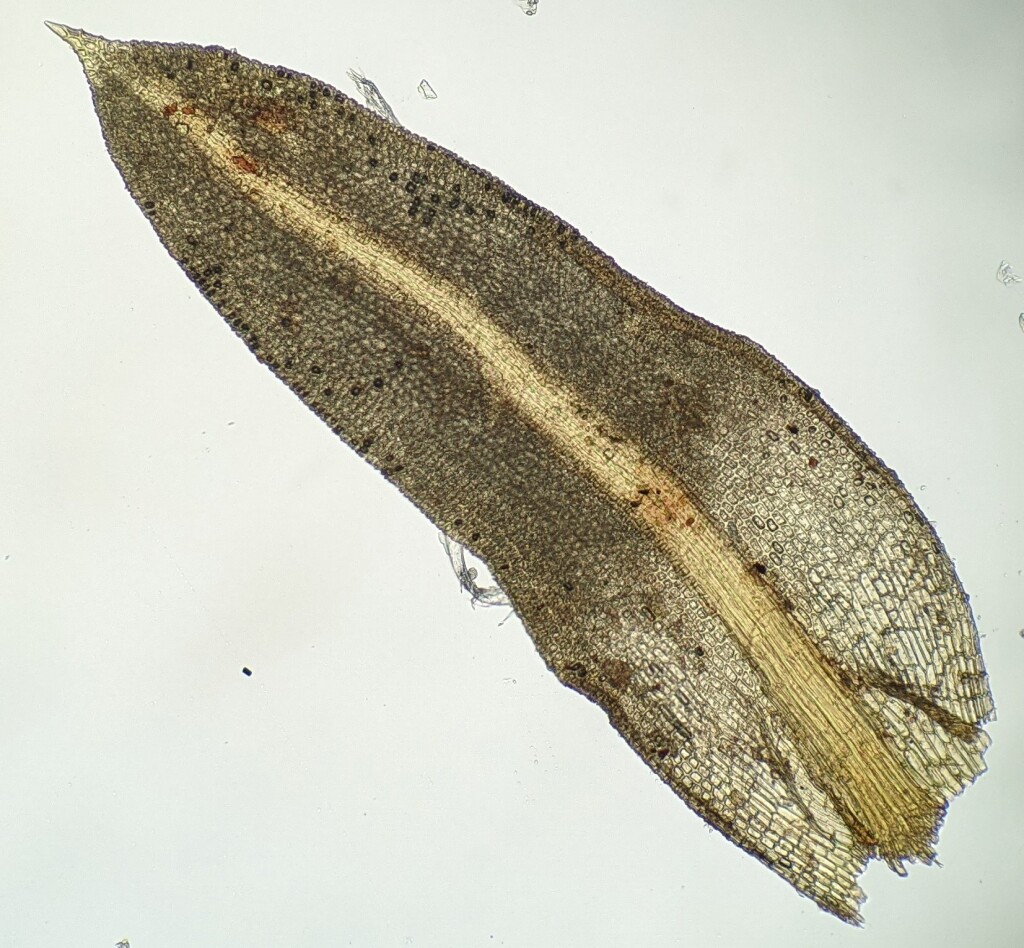Barbula luteola
(Mitt.) Paris ex Catches.Loose tufts, yellow-green. Stems 10–15 mm long, orange-brown, not tomentose. Leaves spreading when moist, contorted, sometimes spirally, with incurved apices when dry, oblong-lingulate to lanceolate, 2–4.2 mm long, 0.6–1 mm wide, slightly carinate; apex acute, obtuse or rounded; costa channelled, shortly excurrent as a stiff mucro or hairpoint; hairpoint to 0.45 mm, hyaline, slightly denticulate; margin entire, revolute in basal three quarters; laminal cells in apical half irregularly hexagonal, isodiametric, 10–15 μm wide, bearing compound branched papillae; basal cells rectangular, 45–130 μm long, 12–23 μm wide, hyaline, smooth, forming a clearly demarcated zone extending furthest and around 1/5–1/3 leaf length midway between costa and margin. Seta 8–20 mm long, yellow, twisted left. Capsules inclined to erect, cylindric or fusiform, 1.5–2.5 mm long, straight or curved, light brown. Peristome red, twisting irregularly. Operculum subulate, c. 2 mm long.
GleP, VVP, GipP, Gold, CVU, GGr, NIS, EGL, HSF, Strz. Infrequently recorded from southern Victoria in rocky gorges or cliffsides, or among dry sclerophyll forest or coastal vegetation. Also WA, SA, NSW and Tas.
 Spinning
Spinning
